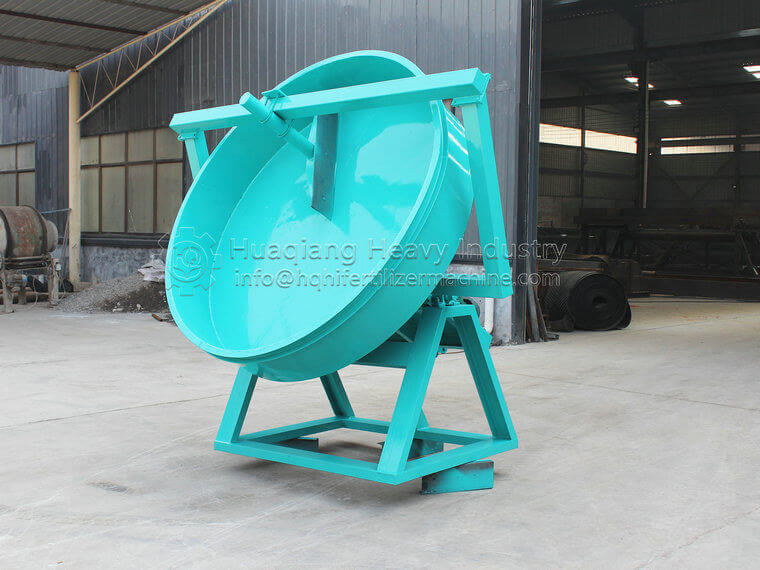What are the common granulators in the production line of cow manure organic fertilizer
In the production line of cow manure organic fertilizer, the granulator is an important equipment for converting pre treated cow manure and other organic materials into regular shaped particles. This is crucial for improving the physical properties of fertilizers, enhancing application convenience, and improving nutrient utilization efficiency. The following are several types of granulators commonly used in organic fertilizer production lines for cow manure and theircharacteristics:
The disc granulator is one of the most traditional granulation methods, particularly suitable for small-scale organic fertilizer manufacturing. It naturally rolls the material into spherical particles under the action of gravity and centrifugal force through a rotating disk. The disc granulator is easy to operate and has a low investment, making it particularly suitable for manufacturers who are new to organic fertilizer production.
The rotary drum granulator utilizes the rotational force inside the drum, combined with an appropriate amount of water and adhesive, to compact raw materials such as cow manure into uniform particles. This type of granulator can handle large-scale production, generate particles with high density, and is not easily broken, making it suitable for medium to large-scale organic fertilizer production lines.
The roller granulator achieves material shaping through two relatively rotating extrusion rollers. It is suitable for materials with low moisture content and can produce high-strength, regular particles. The roller granulator is particularly suitable for applications that require high-strength particles, such as making special fertilizers.
4. New conical granulator
This is a relatively advanced granulation technology that combines the characteristics of disc and drum granulators, capable of producing uniform and compact particles with low energy consumption. The conical granulator is suitable for processing materials containing a certain amount of moisture, forming particles that are compact and have good wear resistance.
5. Composite granulator
Some high-end production lines may be equipped with composite granulators, which integrate multiple granulation principles and can be flexibly adjusted according to the characteristics of raw materials. They can handle both dry and wet materials, providing a wide range of granulation solutions suitable for the production of organic fertilizers with diverse raw material combinations.
Selection Guide
When selecting a granulator for a cow manure organic fertilizer production line, the following factors need to be considered:
Material properties: Consider the moisture content, organic matter content, viscosity, etc. of cow manure, and select the most suitable granulation method.
Production demand: Determine the scale of the granulator based on the expected daily or annual production.
Particle specifications: Clearly define the required particle size, shape requirements, and hardness requirements.
Operating costs: Compare the operational difficulty, energy consumption, and maintenance costs of different models.
Environmental conditions: Consider whether there will be excessive noise, dust, and other issues during the granulation process, and choose corresponding protective measures.
Understanding the common types of granulators and their applicable scenarios in cattle manure organic fertilizer production lines can help make wise choices in practical operations, thereby producing high-quality organic fertilizers that meet the needs of agricultural planting. Before making a purchase decision, it is best to consult a professional equipment supplier or industry consultant for detailed scheme comparison and technical demonstration.

.jpg)


.jpg)


.jpg)
